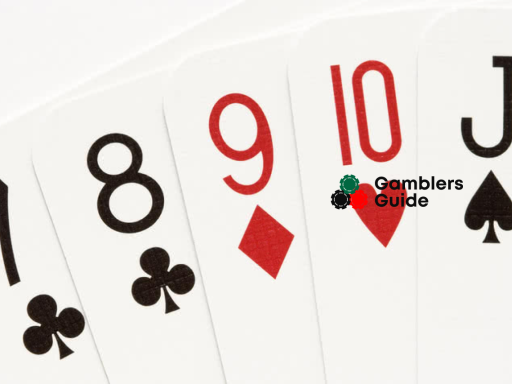Poker is a game that demands emotional control, an understanding of opponents, and a clear strategy. Moreover, poker requires a perfect understanding of when and what bet to make. For instance, to add dynamism to the game, you can make a 3-bet.
What is a 3-bet in poker?
A 3-bet is a significant increase after the initial bet. This is not just to increase the pot but also for analyzing opponents since they have to make decisions and act based on their hands. In reality, these decisions can be quite complex, and some opponents are willing to fold at this stage as they are unsure about what cards will come next and if they can form a high-ranking combination.
Why is it worth trying?
- You put opponents in a position where they have to face difficult decisions, impacting the overall flow of the game and increasing your chances of success. Instead of allowing other participants to observe you, you force them to carefully evaluate their hand’s strength and simultaneously assess risks and future steps. The gameplay of other participants may become less cautious, improving your positions.
- Participants with weak hands particularly dislike 3-betting as it raises the chances of them losing a significant amount. They find themselves in an isolated position. Even if they support the bet, you have a chance to observe their demeanor, fear, and the time they take to consider their next moves, as they have doubts. What happens with other players at this moment provides you with as much information as they lack. Moreover, it increases opponents’ chances of making mistakes, just as yours increase for winning. Such a playing style is aggressive and dynamic, but it is undoubtedly worth trying when the opportunity arises.
- Players at the table decrease. 3-bet reduces the average number of players in the pot, so the chances of someone beating your strong hand are lower. By playing in this way, you encourage players with marginal hands to fold. So now, you are leading.
- Now, you can win the pot without seeing a flop. When you make an aggressive move in a poker game, you might prompt your opponents to fold. This means that you will win the chips that are in the middle of the table without any further community cards being dealt. This kind of pre-flop success not only increases the number of chips you have, but it also sends a message to the other players at the table about your willingness to take control of the game. By showing that you are not afraid to make bold moves, you might be able to intimidate your opponents and gain an advantage in the game.
Types of 3-betting ranges
You have two options for 3-betting — merging and polarizing. Your success at the poker table depends on which option you choose.
A merged 3-bet range consists of combining strong hands such as premium pairs and strong Broadway hands, sometimes even speculative hands that can potentially flop well. Merged hands signal to opponents that you have a strong hand, making it difficult for them to counter your moves effectively. Additionally, maintaining balance and not being too predictable is possible with a merged 3-bet. This means having the flexibility to utilize a merged 3-bet with a variety of hands, not always premium ones, adding an element of unpredictability to the game, especially when used correctly, and choosing hands with post-flop potential.
On the other hand, a polarized 3-bet range is aimed at influencing players who are too cautious post-flop or are not prone to folding in response to a 3-bet. Here, you can apply pressure on other players, either by bluffing or actually having a strong hand. However, the frequency of 3-bets needs to be adjusted so that your actions and hand strength do not become too obvious to other players, as they are capable of adjusting their tactics based on your moves and decisions.
Therefore, 3-betting comes in different forms, and mastering this tool is crucial to avoid failures and not become too obvious to opponents who seek advantages and employ their strategies just like you.
Be ready to adjust your 3-betting strategy
Flexibility is essential not only for survival but also for poker play. Your ability to change and adapt your strategy according to the game’s flow is crucial. To be flexible, pay attention to such moments:
How often your opponent folds
Information on how often opponents fold is valuable for you. For example, if your opponent tends to fold frequently to 3-bets, consider increasing the frequency of your aggressive moves. This emphasizes the weakness of their poker hand. However, be cautious not to become too predictable.
Open-raiser’s post-flop aggression tendencies
Understanding the post-flop tendencies of the player who initiates the betting is crucial for making well-informed decisions. If the person who raises the bet is known for their aggressive play style after the flop, you may want to adopt a more careful approach with your 3-bets or make adjustments to your hand range to compensate for their potential aggression.
Tendencies of the players behind
Keep an eye on players who haven’t acted yet. Their aggressiveness and pressure may signal for you to choose a more classic approach to betting.
When is this strategy most effective?
3-betting in poker is effective against opponents with an aggressive playing style who frequently fold. It is also an excellent choice when you need to isolate an opponent and have the opportunity to win even pre-flop. These actions make sense, especially when you hold a promising combination like AA, KK, or QQ, giving you the maximum chances of success. Utilizing a 3-bet in such situations can make the game highly profitable for you. Finally, you can also incorporate bluffing with a 3-bet — why not? It’s an excellent tool to make game outcomes unpredictable, making it significantly more challenging for opponents to decipher the strength of your hand in advance.
When to Avoid 3-Betting in Poker?
Until now, we’ve discussed why you should know about 3-betting and use this tool. However, there are cases when it’s better to refrain from such a decision.
Avoid 3-betting against tight players, players belonging to the marginal category, in early positions, and also when you cannot maintain control over your poker hand. In all these cases, you risk more than you gain and expose yourself to potential losses.
How to Play a 3-Bet in Poker?
It’s essential to not only know when to make a 3-bet but also understand how to continue the game. You must have a good understanding of how to play the hand post-flop. A timely continuation bet (c-bet) can use the momentum gained from a pre-flop 3-bet, maintaining pressure on your opponents. Sometimes, make check-folds, depending on how favorable or unfavorable the game situation is. Evaluate your opponents’ tendencies after the flop, notice when they show weakness or strength, and be ready to fold your cards if necessary. Another rule you’ll need: avoid the temptation to inflate the pot, as you risk along with everyone else, and not only do you increase the chances of a better win, but the risks also rise with it. So, be cautious with each move.
These are all the rules. Just be adaptive and flexible, observe, and press when you are confident it’s a good idea. However, remember that no tool or technique in the game guarantees a hundred percent victory. Never forget about risks and the fact that other players are also quite strong and can throw interesting surprises your way. Now, you are warned, and therefore, the advantage is on your side!






